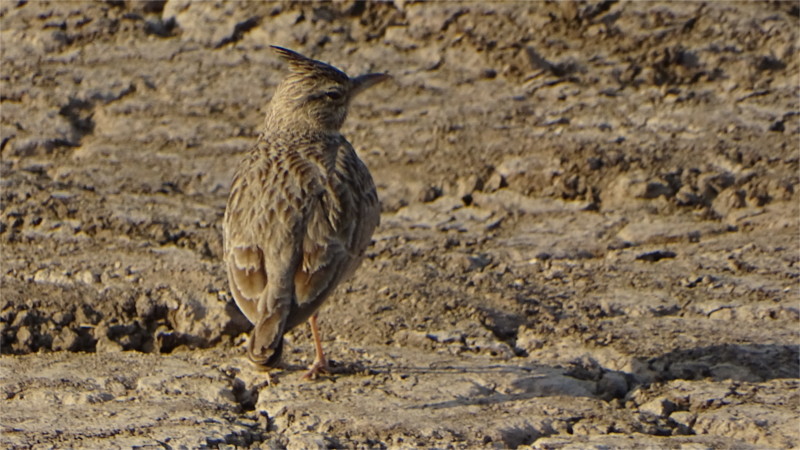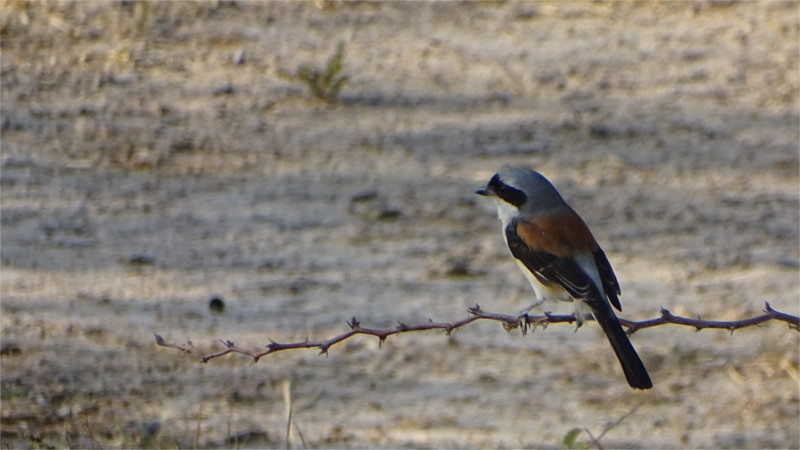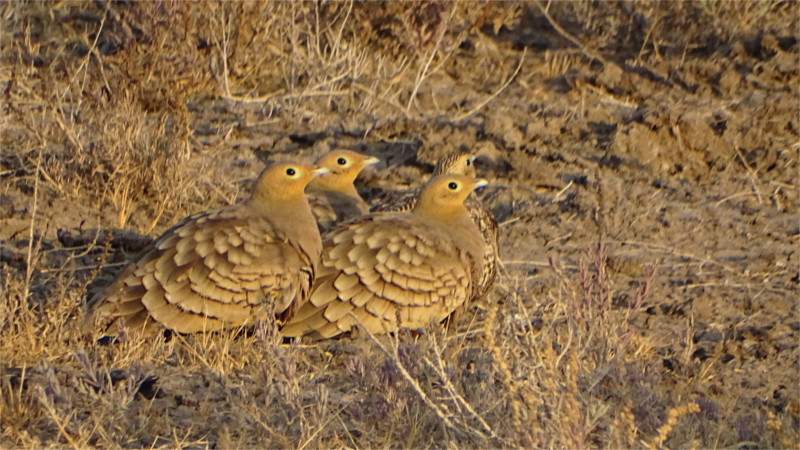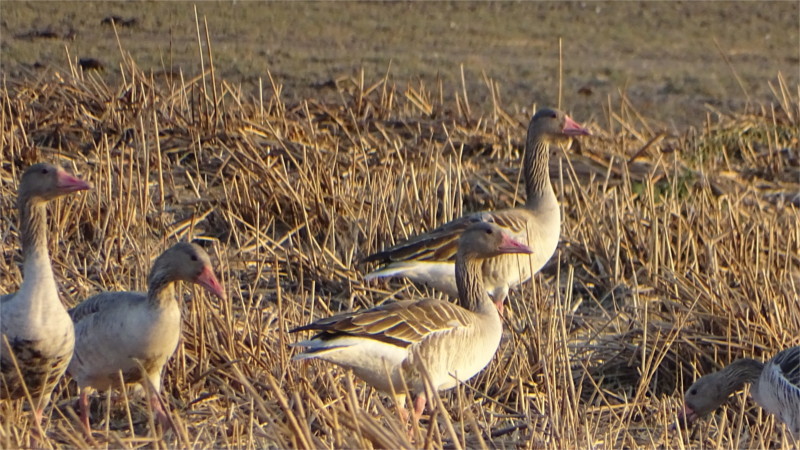After lunch we set off to a part of the Keoladeo National Park which we hadn’t seen before. There were few people here in the lazy afternoon. In these flooded fields nature was also at rest. A Nilgai (Boselaphus tragocamelus) rested in the shade of a tree. A Small Blue Kingfisher (Alcedo atthis) sat on a branch above it. Around them was a tremendous variety of waterfowl.
At the end of a long branch overlooking a deeper part of this water world, an Indian Darter (Anhinga melanogaster) spread out its wings to dry.
In the water nearby the spectacular Red-crested Pochards (Netta rufina) made deep dives next to some very fashionably black Common Coots (Fulica atra),
Elsewhere in the shallows flocks of Greylag Geese (Anser anser) shared space with Mallard Ducks (Anas platyrhynchos). Males of ducks are usually more colourful than females. The female is the primary caregiver for chicks, and, since ducks mostly nest on the ground, her colour is meant as camouflage.
When I zoomed out a bit I could see that this was part of a larger mixed flock. The Family probably has a record of all the waterfowl in this larger bunch, but in this photo I can easily see the distinctive white stripe down the head and neck of Northern Pintails (Anas acuta).
Zooming back even more, I could see the edge of human activity, in the form of cows wandering in to browse at the edge of the waterworld. Cows can sometimes step unwittingly on nests of birds, crushing eggs. This level of human interference is unavoidable in India. Bharatpur’s Keoladeo NP has done wonders for conservation within these human constraints.












